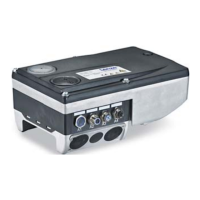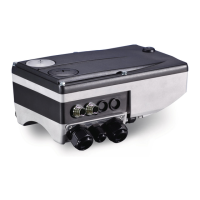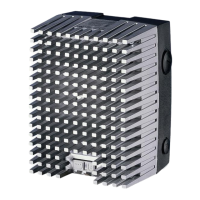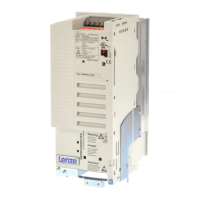Lenze · 8400 HighLine · Reference manual · DMS 12.0 EN · 06/2017 · TD23 1444
17 Function library
17.1 Function blocks | L_NSet_1
_ _ _ _ _ _ _ _ _ _ _ _ _ _ _ _ _ _ _ _ _ _ _ _ _ _ _ _ _ _ _ _ _ _ _ _ _ _ _ _ _ _ _ _ _ _ _ _ _ _ _ _ _ _ _ _ _ _ _ _ _ _ _ _
17.1.118.8 Additional setpoint
Use the nNAdd_a input to define an additional value (e.g. a correcting signal) and combine it
arithmetically with the main setpoint nNSet_a.
• First, the additional setpoint is led via a ramp function generator with linear characteristic. Its Ti
times can be set in C00220
(acceleration time) and C00221 (deceleration time).
• When the input bNAddInv is set to TRUE, the additional setpoint can be inverted before having
an effect on the ramp function generator.
•When the input bLoad is set to TRUE, the ramp function generator is set to zero for the
additional setpoint and held there without considering the Ti times. The same applies when the
controller is inhibited.
• The following arithmetic combination of main setpoint and additional setpoint can be selected
in C00190
:
17.1.118.9 Application example for the additional load function
The motor control of the drive is provided with a function for automatically carrying along ramp
function generators for "jerk-free" setpoint connection. For speed-controlled drive tasks, the
LS_MotorInterface
SB outputs the current actual speed value via the nHlgSetValue_a output (e.g. in
case of a pulse inhibit, flying restart, controller inhibit).
• In case of a pulse inhibit, the main setpoint generator must be carried along with the current
actual speed value to ensure jerk-free setpoint transfer.
• The actual speed value is carried along automatically if the following wiring is provided:
• LS_MotorInterface
.nHlgSetValue_a L_NSet_1.nCInhValue_a
• LS_MotorInterface
.bHlgLoad L_NSet_1.bExternalCINH
Value in C00190 Function Info
0 nNOut_a = nNSet_a The additional setpoint nNAdd_a is
not processed.
1 nNOut_a = nNSet_a + nNAdd_a
2 nNOut_a = nNSet_a - nNAdd_a
3 nNOut_a = (nNSet_a * nNAdd_a) / 100 % Internal scaling:
• 100 % ≡ 16384
•1 % ≡ 164
4 nNOut_a = (nNSet_a * 1 %) / |nNAdd_a|
5 nNOut_a = (nNSet_a * 100 %) / (100 % - nNAdd_a)
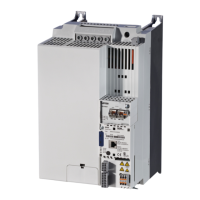
